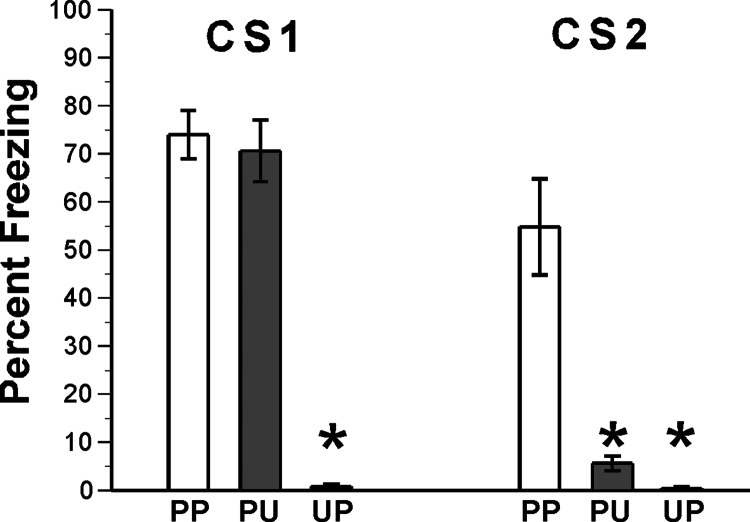Fig. 1.
First-order fear conditioning and SOFC each depend on associative learning. Rats received associative (paired, P) or nonassociative (unpaired, U) presentations of the CS and US during first- and second-order conditioning. Fear (freezing) responses were tested after completion of second-order conditioning. Results were analyzed by a two-factor ANOVA, with test CS (CS1, CS2) and training type (PP, PU, UP) as the factors (test CS was a repeated measure). The analysis revealed significant main effects of training type [F (2, 15) = 60.7; P < 0.000001] and test CS [F (1, 15) = 74.5; P < 0.000001] and a significant test CS × training type interaction: F (2, 15) = 34.0; P < 0.00001. Posthoc mean comparisons (Tukey’s honest significant difference text) showed that animals that received pairing of CS1 and the US in first-order conditioning (groups PP and PU) showed equivalent levels of freezing to CS1 (P = 0.99), but animals given unpaired presentations of CS1 and US during first-order conditioning (UP) did not freeze to CS1, indicated by a significant difference in freezing to CS1 between group UP and groups PP and PU (P < 0.001). Similarly, only group PP, which received paired presentations of CS1 and the US during first-order conditioning and paired presentations of CS2 and CS1 during second-order conditioning, showed significant freezing to CS2. Responses to CS2 were significantly greater in PP than in the other two groups (P < 0.001). These results indicate that both the first- and second-order paradigms depend on associative learning: first-order conditioning depends on the CS1–US association, and second-order conditioning depends on the CS2–CS1 association.

